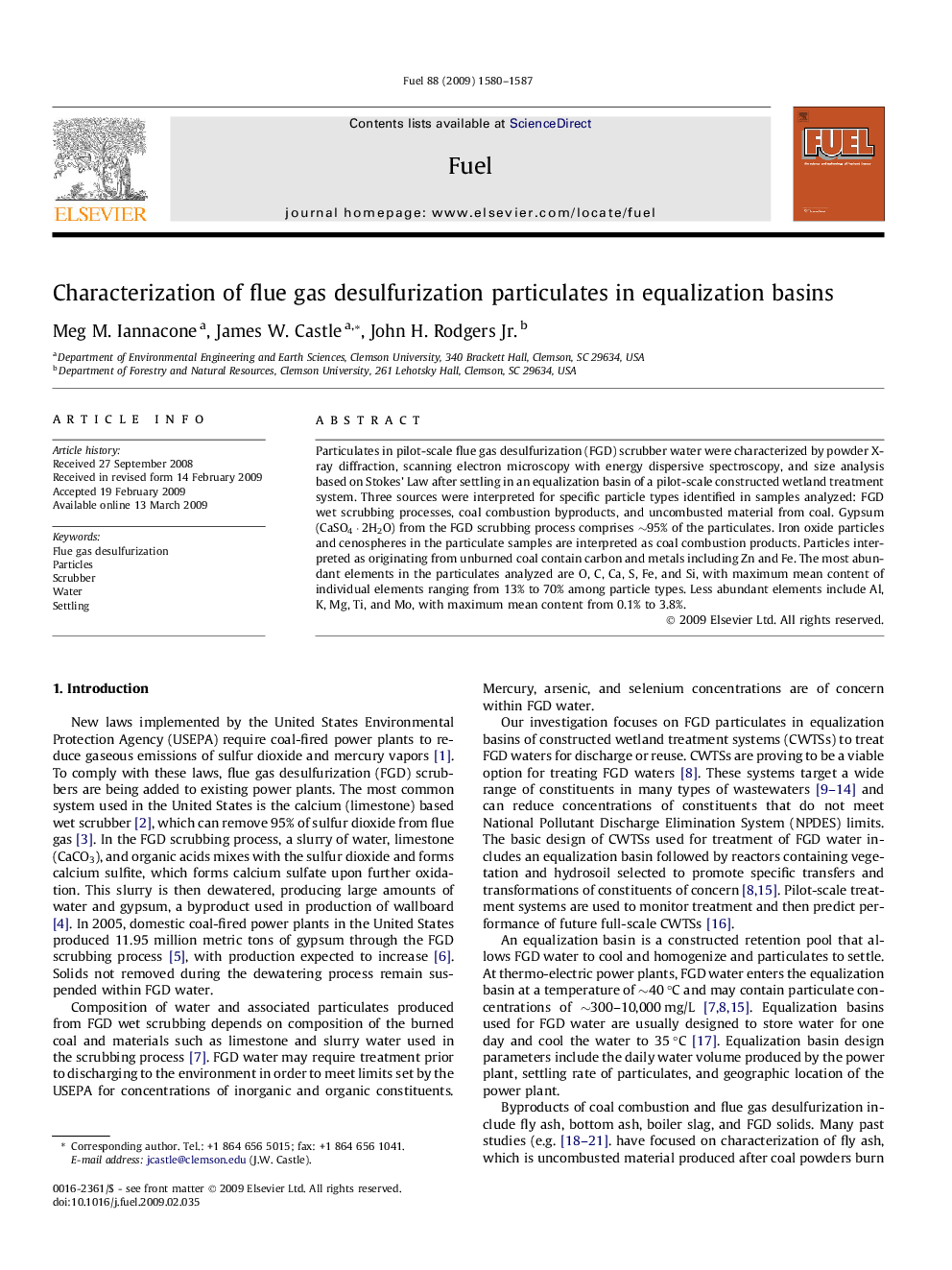| Article ID | Journal | Published Year | Pages | File Type |
|---|---|---|---|---|
| 207111 | Fuel | 2009 | 8 Pages |
Particulates in pilot-scale flue gas desulfurization (FGD) scrubber water were characterized by powder X-ray diffraction, scanning electron microscopy with energy dispersive spectroscopy, and size analysis based on Stokes’ Law after settling in an equalization basin of a pilot-scale constructed wetland treatment system. Three sources were interpreted for specific particle types identified in samples analyzed: FGD wet scrubbing processes, coal combustion byproducts, and uncombusted material from coal. Gypsum (CaSO4 · 2H2O) from the FGD scrubbing process comprises ∼95% of the particulates. Iron oxide particles and cenospheres in the particulate samples are interpreted as coal combustion products. Particles interpreted as originating from unburned coal contain carbon and metals including Zn and Fe. The most abundant elements in the particulates analyzed are O, C, Ca, S, Fe, and Si, with maximum mean content of individual elements ranging from 13% to 70% among particle types. Less abundant elements include Al, K, Mg, Ti, and Mo, with maximum mean content from 0.1% to 3.8%.
